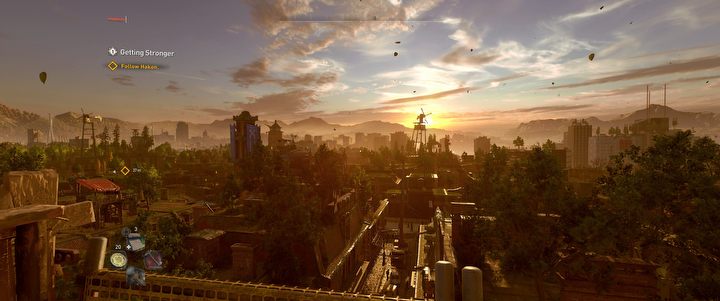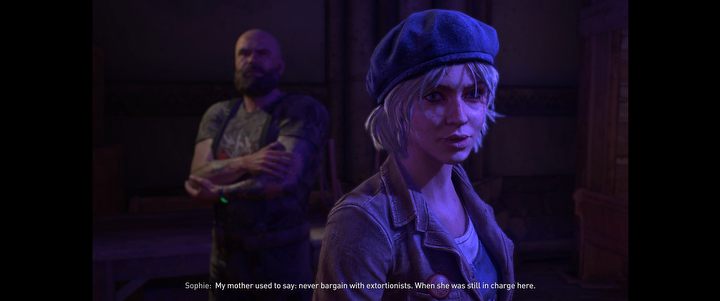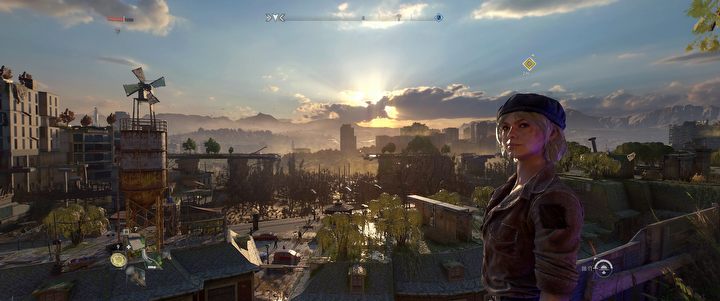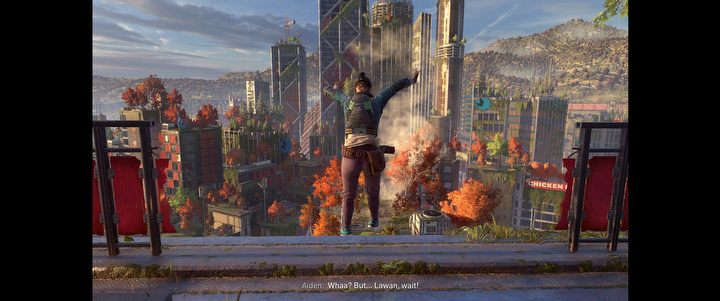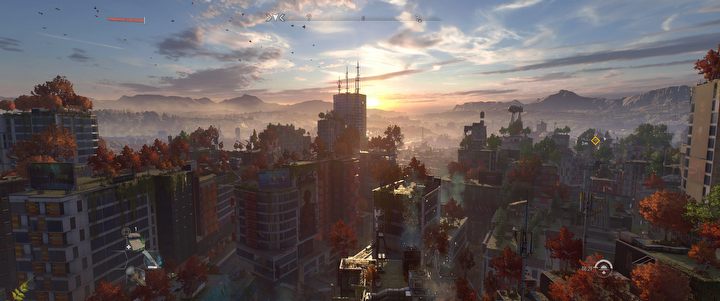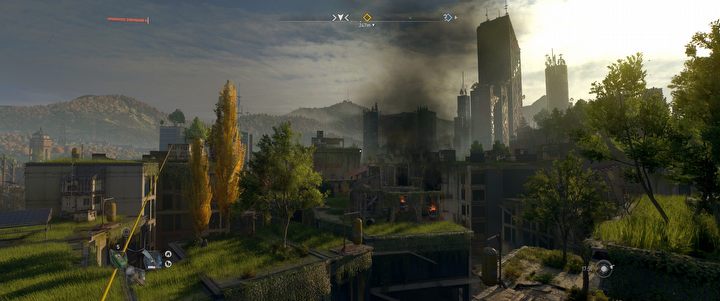We've Taken Nights a Bit Too Far - Interview With Dying Light 2's Dev
Dying Light 2 kept us waiting for a long seven years. Now that the wait is over and we've had time to test the game, it's time to talk to Tymon Smektala, the lead designer of this title.

Yes, we've already played the new Dying Light and appreciated it a lot. Are you curious about the impressions? No, we won't reveal them here but you can read our review. Instead, we will talk about 500 hours of gameplay, European inspirations behind the new city, a real pandemic and a fictional night that is less scary in the new game than in the original.
Below, you will find our interview with Tymon Smektala, the lead designer of Dying Light 2. We have asked him about topics like the inspirations behind the in-game city and its location, or the reasoning behind making the nights less scary.
Villedor – best place to hang out with zombies
Marcin Strzyzewski: The ending of the expansion to the first Dying Light introduced a fairly concrete version of the events and the mystical nature of the zombie outbreak. However, I have the impression that there is not much left of this thread in the sequel. Is it even canonical?
Tymon Smektala: We strongly believe that the Dying Light universe is so capacious it can contain many different stories, and the canon can be referred to not only by directly depicting subsequent events.
We wanted to do it differently – showing the long-term consequences that could have occurred after Harran. What happened there was the basis for the construction of our new world, but in Dying Light 2, it is reflected more indirectly, left to be discovered by the attentive player. Much of the credit goes to Thomas Gerbaud, our World Director, who spent a lot of time preparing the so-called bible of the world, a bulky document linking the threads of both games. Such a fictional procedure, moving the story forward many years, gave us more freedom in building a gameplay and narrative, allowed us to let our imagination run wild.
Harran was clearly inspired by Turkey. Villedor resembles more of a western city – to what extent does this association correspond to your idea and inspirations?
The association is quite accurate, we wanted Villedor to be a kind of representation of Europe; an old, traditional world that stands on the brink of apocalypse, then gets swept away by it... And on its remnants, something new arises, a new society based on new rules.
Europe is also a set of cultural and visual cues well known to most of us – so it was easier to build a virtual world around them. And at the same time, this place, although perhaps familiar and tame for us, is a bit exotic, distant for the inhabitants of many parts of the world, and thus still causes curiosity. These were the main reasons why we decided to place the action of the game in one world and not another.
Remember Harran?
The city of Harran is real and is located in Turkey, not far from the Syrian border. However, this is not a metropolis like the one seen in the game. It is a fairly small town of approximately 10,000 inhabitants. The name of the fictional metropolis is very similar in sound to the word Haram, which in Arabic means "what is forbidden." Considering that the digital Harran was cut off from the world, this association does not seem accidental.
I know you recently wondered if the player should be able to repair the weapons. Why did you end up making the decision you did?
The so-called gameplay loop consisting in searching for new weapons, and taking care of resources to be prepared for the surrounding challenges, is a permanent element of survival games, the first Dying Light included. In the end, we decided that in this aspect we wanted to stick to our guns.
Silent night, scary night
In the first part, we started in a location with short buildings. It made the night scarier. We did not have so many opportunities to vertically escape from the most dangerous opponents, which intensified the fear. Now it is different. Was it a conscious decision?
One of the main conclusions we reached when analyzing the data from the sessions of players from the original was that we've probably taken nights a bit too far. It looked great in the trailers, but it turned out that the overwhelming part of the players just missed it.
For two reasons – it was too scary and the incentive to go out at night was too small. The two of us tried to fix both of these things. We have inscribed motivation in the construction of the world – places with the most valuable loot are more accessible at night, when zombies go out; we have also changed the rules of the game so that, among others, we could give players more space for a possible escape from the night chase.
In Dying Light, walking into the city at night was an event. Here, it's just another day in the office. Some of the players may even blame you for actually forcing them to go out into the city at night. What's behind this, quite significant, change?
I have already told you about the motivation for these changes, but as for the expectations of the players... I think we have proved that we're trying to listen to our community very carefully, so if there is enough push from players who want a bigger challenge after dark, we will be ready to do it; we have a lot of quite concrete ideas on how to implement additional challenges after the premiere.
To what extent has the pandemic made the development more difficult? Do you think it is possible to realistically estimate how many months of delay the pandemic cost you?
It is impossible to answer this question realistically, because it's always guesswork. In my personal opinion, as an organization, we handled the pandemic very well and we didn't really lose a day in the transition from offices to homes. This is largely due to people who are usually not mentioned when talking about game dev – our IT, administration, HR.
PANDEMIC AND GAMES
The virus affected the entire world and all industries. The impact was smaller for some companies, bigger for others. We wrote about the impact of covid on game developers still in the early stage of the pandemic. We heard many amazing stories along the way, including a tale from the creators of Call of Duty who recorded cut-scenes remotely. It's enough to look at the calendar of releases to understand that the pandemic actually had a serious impact on the industry.
500 hours of gameplay, 25 hours of the main story
You have estimated that Dying Light 2 can take up to 500 hours. On the one hand – it's awesome. On the other hand, it makes us wonder what will happen next. Bigger and bigger games mean more work, more expenses, and more risks of game's not pulling their weight in the end. As a developer, don't you feel that at some point you have to pause in the pursuit of ever bigger games?
Of course you are… Or rather: each studio will have to develop a strategy that will allow it to survive in the difficult and rapidly changing market. Gamepass has already changed how we consume games, and that change will only get more pronounced. Some developers will focus on creating short experiences for Gamepass or other subscriptions, others will try to build games-platforms that earn for a long time thanks to microtransactions, others will take the greatest risk and will build massive games for premium prices.
500 hours sounds impressive. My question is different, though: How much time do you estimate is enough to complete this game from start to finish without looking for scrap in the bins?
We wanted Dying Light 2 to be a "finishable" game, we believe that this story is best defended as a whole, not when the player gets to know half of it. The passage of the main storyline takes about 20-25 hours of gameplay, the side missions take about 80 hours. 500 hours actually accounts for discovering everything the game has to offer, in every possible variation.
I have the impression that you have put a lot of effort into all kinds of details, and a great example of this is the "surprise" waiting at the gate, after completing one of the starting quests, the one with water in the church. How big an effort have you made in order to bring this type of details into the game?
It was big. It's hard to find a different answer, there is a person behind each element of the game, most often a group of people, and there is something in game developers that makes them very stubborn and eager to make sure everything's as good as it can be, even if it's an obscure texture.
In the game, the character is shown in the inventory screen, so we can admire the current model of Aiden with the right clothes and all. What stood in the way of including the – seemingly obligatory nowadays – photo mode?
It's just another variable to handle at the premiere, another element whose quality needs to be taken care of. Game dev is often an art of giving up the elements that could complicate things too much, especially at launch. Photo mode is in our plans, but for the release, we wanted to use our resources in a different way.
The game has a many similarities to the games from the Far Cry series, even though the gameplay focuses on something completely different. Do you follow the achievements of the competition? Can other games have any impact on the development of your products?
Of course they do, although it's rather subconscious – we're all gamers and game developers at the same time. Our biggest curse is that it's hard for us to just play other games. Part of the brain always, all the time, analyzes what it sees, looks for analogies between our solutions, translates systems from other games into ours. We are inspired by everything – Far Cry as well as Forza, Going Under.
What's up with the dumplings? The slogan is like on every wall.
We just like dumplings. And as a piece of trivia, let me tell you that our creative director has the nickname Pyza [coincidentally also a name of a type of dumpling in Poland – ed. note], and it is worth looking around at Villedor. We have hidden something in there that I hope will make the pyzys equally famous around the world. Thank you for the interview and the great, unusual questions – it was a pleasure to be able to answer them.
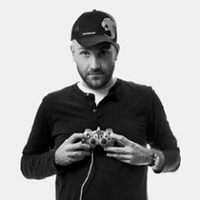
Tymon Smektala – works at Techland since May 2013. He was a producer of the first Dying Light. Since 2016, he is working as a lead designer for Dying Light 2. In the past, he was an editor-in-chief of "Click", a Polish video game magazine. A doctor of economics, a father, and a rapper.
